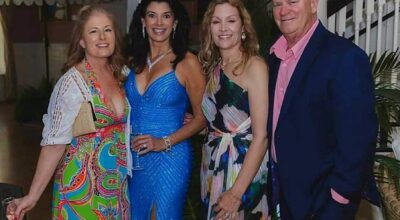Books about language
Published 1:50 am Monday, August 26, 2019
With all the back-to-school preparations and focus, this is a good time for a column dedicated to books about language and linguistics. One of the best books I’ve seen yet about linguistics is the short and very accessible Language Myths by Trudgill and Bauer. The authors identify 21 myths we often believe about language such as “double negatives are illogical” and “some languages have no grammar” and then offer clear, convincing explanations that debunk the myths and tell us what is really going on with language. Rickerson and Hilton’s “The 5-minute Linguist: Bite Sized Essays on Language and Languages” is another pleasant read for those interested in learning more about linguistics. Topics include the origin of language, the difference between languages and dialects, how many languages there are in the world (the answer may surprise you) and where writing systems come from. In my Introduction to Sociolinguistics class I often assign John McWhorter’s “Word on the Street: Debunking the Myth of a “Pure” Standard English” and have noticed that students are interested in McWhorter’s explanations and background stories of how English grammar rules (often from Latin) came into being. Steven Pinker’s “The Language Instinct and Words and Rules” are other popular titles for those who enjoy reading about language.
Simon Winchester’s “The Professor and the Madman: A Tale of Murder, Insanity and the Making of the Oxford English Dictionary” is another must read. The Oxford English Dictionary is based entirely on usage, not prescriptive language rules and provides readers with a history of a word’s meaning, with citations often going back hundreds of years. Winchester’s book is a fascinating account of the challenges facing the team of scholars and the individual citizens who participated in the research and worked together to create the dictionary. In early 2019 a movie version of “The Professor and the Madman” came out to the delight of language devotees. The video is available on Amazon Prime and Netflix and is faithful to the book. Other popular titles about the English language are McCrum and MacNeil’s “The Story of English” and MacNeil and Cran’s “Do You Speak American?”
Rosina Lippi-Green’s “English with an Accent” is a compelling read and records with great detail the reality and social consequences experienced by those who speak English with a foreign accent. Her chapter on language profiling and stereotypes in Disney films has special significance in our current political culture. She notes that in the movie “Aladdin,” Jasmine’s father speaks British English, while Jasmine and Aladdin speak MUSE (Mainstream U.S. English), although all of them live in the same country. In the movie bad characters from the same area as the main characters tend to speak heavily accented English and are often darker-skinned. In another section, she describes the negative linguistic stereotypes associated with southern English, including lack of intelligence, laziness and sometimes even being a danger to others. In her analysis of several Disney films, Lippi-Green questions the effect of accented English and linguist stereotyping on children’s perception of good and bad people. Other suggestions for books in this category include Deborah Cameron’s “Verbal Hygiene,” as well as her books “Language and Sexuality” and “The Myth of Mars and Venus: Do Men and Women Really Speak Different Languages?”
Recently, “Dreyer’s English: An Utterly Correct Guide to Clarity and Style” has taken the book world by storm. It provides an enjoyable read from a former copy chief at Random House. Dreyer includes interesting stories and though-provoking examples from his time in the publishing world and makes a strong case for clear writing over just following the rules. Finally, I’d like to close by recommending three titles that treat the connection between language, culture and thought. As I often tell my students, every language represents a different way to divide up reality. Daniel Everett’s “Don’t Sleep, There are Snakes: Life and Language in the Amazonian Jungle” is a fascinating and sometimes unsettling account of his time with the Piraha tribe in Brazil. Although a more complicated read, George Lakoff’s “Metaphors We Live By” will make you aware of the way we construct meaning through the use of metaphor. For example, in English we often talk about conflicts in communication using war metaphors (I shot him down; She blasted my argument, etc.) and we often employ food metaphors for thinking (food for thought; to spoon-feed someone an idea; to sugarcoat something). Lakoff’s “Women, Fire and Dangerous Things: What Categories Reveal About the Mind” is also interesting. In case you were wondering, the title makes reference to Dyirbal, an Australian Aboriginal language, in which the noun class system includes women, water, fire and violence in the category feminine, a very provocative way in which to divide up reality. There should be used copies available for a much lower price than the new ones.
Julia Palmer is an associate professor of modern languages at Hampden-Sydney College. She can be reached at jpalmer@hsc.edu.





